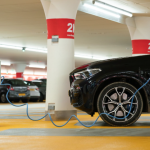Growing customer demand and market penetration aren’t the only factors driving the increasing numbers of electric vehicles (EVs) across the world. EVs charging faster and driving further is encouraging governments in many countries to incentivize the production and adoption of EVs.
While policies differ from country to country, nearly every developed region of the world is looking to invest in EVs in a major way.
Here’s an overview of policies and incentives in place across North America, China, the European Union and the United Kingdom.
North America
The United States, Canada and Mexico each have different stances when it comes to EV legislation and encouragement.
United States
The United States falls in the middle of the three in terms of laws that incentivize EV production and ownership. While the U.S. has not yet set a date for banning the sale of fossil fuel vehicles like many other countries, it does have laws in place that encourage individuals to make the switch to electric.
The Alternative Fuel Infrastructure Tax Credit offers a tax credit for up to 30% of equipment cost for installing equipment for natural gas, propane, liquefied hydrogen, electricity, ethanol (e85), or diesel fuel blends by December 31, 2021.
- For example, if you install an EV charger in your garage or a company adds hydrogen dispensers to their gas stations, you qualify for a rebate.
The Advanced Technology Vehicle and Alternative Fuel Infrastructure Manufacturing Incentives do something similar for vehicle manufacturers. They offer direct loans for up to 30% of the cost of re-equipping, expanding, or establishing manufacturing facilities in the United States used to produce qualified low-emission vehicles.
These incentives need to be renewed every year though, and some have concerns about their longevity. The Clean Energy for America Act 2021, introduced by the Senate in May, would set a dramatically simpler set of long-term, performance-based energy tax incentives for the future. The act has yet to be passed into law, however.
The U.S. also offers grants to projects like the development of zero-emission vehicle infrastructure and the installation of electric vehicle charging stations along the National Highway System that address climate change and environmental justice impacts.
In November, Congress passed a $1.2 trillion infrastructure bill that included substantial funding for the development of EVs and clean energy infrastructure. Highlights of the bill include:
- $7.5 billion toward the development of the national EV charging network
- $5 billion for the production of electric and low-emission buses
- $8 billion to set up at least four “clean” hydrogen hubs
- $6 billion for the creation of a cost-share program to support electric grid reliability research and development.
An additional $53 billion would go toward overall clean energy and other renewable projects.
The proposed American Jobs Plan, another bill from President Biden, would push the country down the path toward EV adoption as well. It would include $174 billion for investment in EV manufacturing, charging infrastructure, point of sale rebates and tax incentives. This bill is not currently law, however, and is still in Congress.
Voting on the Build Back Better Act, a part of the American Jobs Plan, was recently postponed in Congress. The Build Back Better Act includes a $12,500 tax credit for EV owners. While current legislation offers owners up to $7,500 for buying an EV, benefits for manufacturers cease after they produce 200,000 units.
Recently, the U.S. announced its goal of having roughly half of all cars and light-duty trucks sold in the country be EVs, plug-in hybrids or hydrogen-fuel cell vehicles by 2030. This target is voluntary for automakers, but the U.S. government has promised to provide federal funding for the manufacturing of these vehicles.
Canada
Unlike the U.S., Canada has pledged to ban the sale of new fossil-fuel burning vehicles (both cars and light-duty trucks) by 2035 in an effort to reach net zero emissions by 2050.
In addition, Canada also offers incentives for those who purchase EVs and EV equipment. Different provinces provide different incentive amounts, but the purchase of an EV comes with some sort of financial rebate.
Canada is pushing toward developing EV charging infrastructure as well. The Zero Emission Vehicle Infrastructure Program is a 5-year, $280 million program addressing the lack of charging and refuelling stations in Canada by increasing the availability of localized charging and hydrogen refuelling stations.
Mexico
Mexico is lagging behind the United States and Canada, with no current laws in place to provide tax credits or financial incentives to owners of EVs or EV equipment. Mexico’s electrification policies are still in development, although the country aims to cut emissions in half by 2050 from 2000 levels, and is also seeking to have 35% renewable energy by 2024.
The EU & UK
Europe is setting more ambitious goals than countries in North America, including:
- Becoming climate-neutral by 2050
- Having at least 30 million EVs on roads by the end of the decade
- Banning fossil-fuel cars by 2035
- Pledging €750 billion (~$884 billion) to boost clean vehicle sales and promote charging infrastructure
Countries within the EU are putting forth their own legislation to promote EV adoption. Germany recently introduced an economic stimulus package that includes €2.5 billion (~$2.95 billion) earmarked for the expansion of EV charging and battery production. Germany also aims to install one million public charging stations by 2030, up from ~28,000 currently. Norway plans to become the world’s first country to end the sale of fossil-fuel cars, with a deadline of 2025.
United Kingdom
Aside from Norway, the UK has set its sights on even more ambitious emissions goals than countries in the EU. It recently announced that it will end the sale of new fossil fuel cars by 2030, making the UK the first G7 country to do so.
The UK has also pledged £1.8 billion (~$2.45 billion) to encourage EV sales and develop more EV charging stations.
In addition, the UK offers grants for purchases of EVs, which include cars, motorcycles, vans and more. Those who purchase EVs that meet certain emissions and range standards can receive up to £2,500 (~$3,400) off the vehicle’s price.
China
China plans to make all new vehicles sold from 2035 onward eco-friendly. Half are expected to be zero-emission options like electric and fuel cell vehicles, while the other half would be hybrids.
Compared to many Western countries, China offers slightly smaller financial incentives for EV purchases. And they’re getting smaller every year. Purchases of EVs with a range of 300-400 km (190-250 miles) are currently eligible for a subsidy of around 13,000 yuan (~$2,000) and those with a range of greater than 400 km are eligible for a of 18,000 yuan (~$2,800).
China also mandates that car manufacturers sell a certain percentage of EVs per year or face financial penalties. By 2030, China aims to have EVs make up 40% of all car sales.
China also rolled out an infrastructure plan in 2020 with $1.4 billion dedicated toward the development of EV charging stations. As a result, there were over 807,000 public electric vehicle charging stations in China by the end of 2020.






